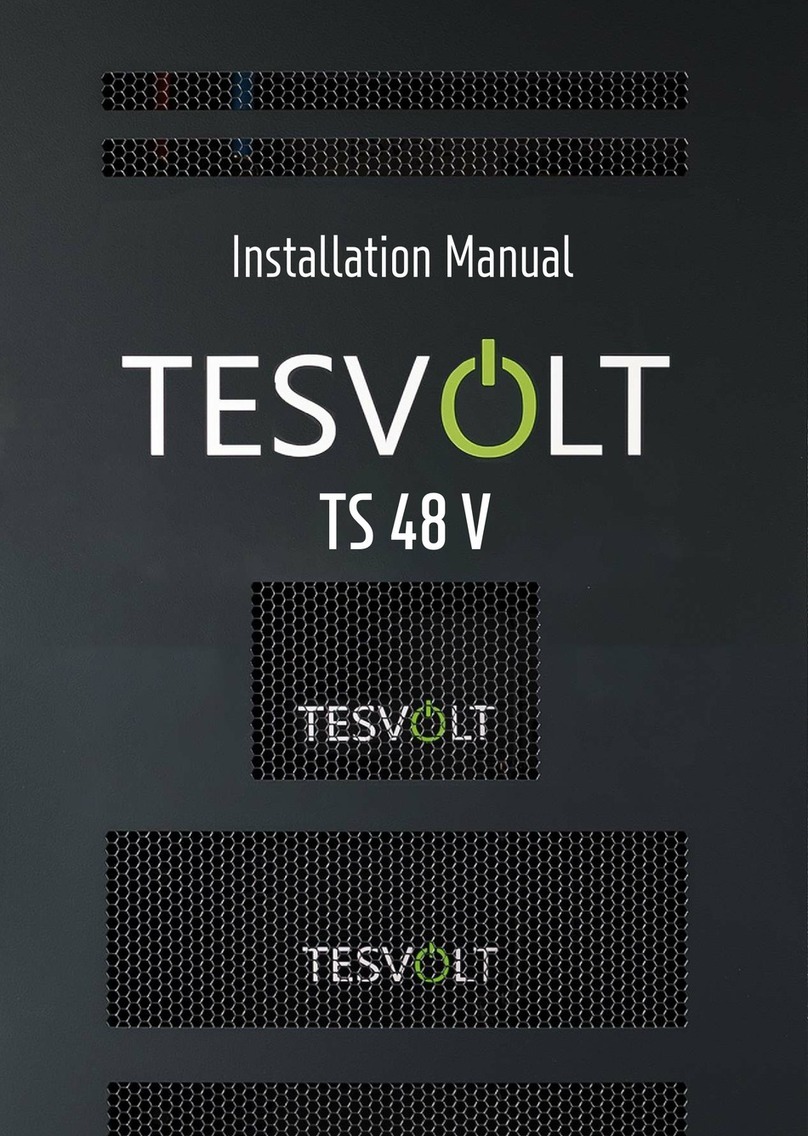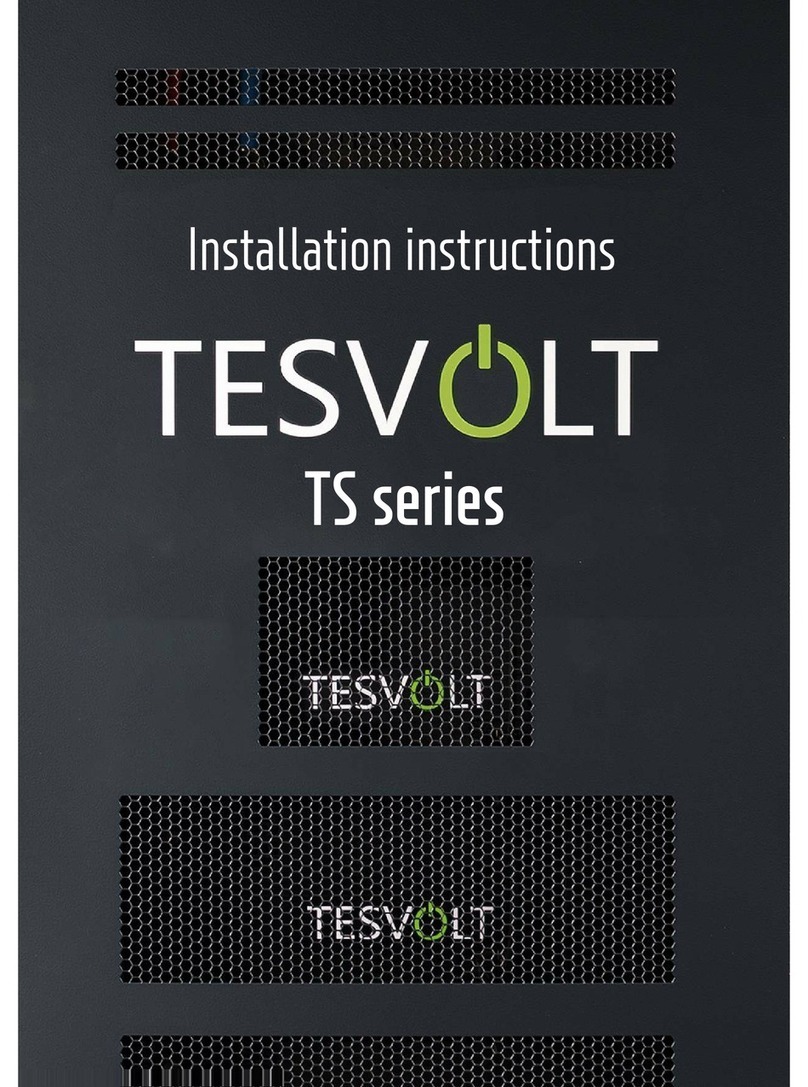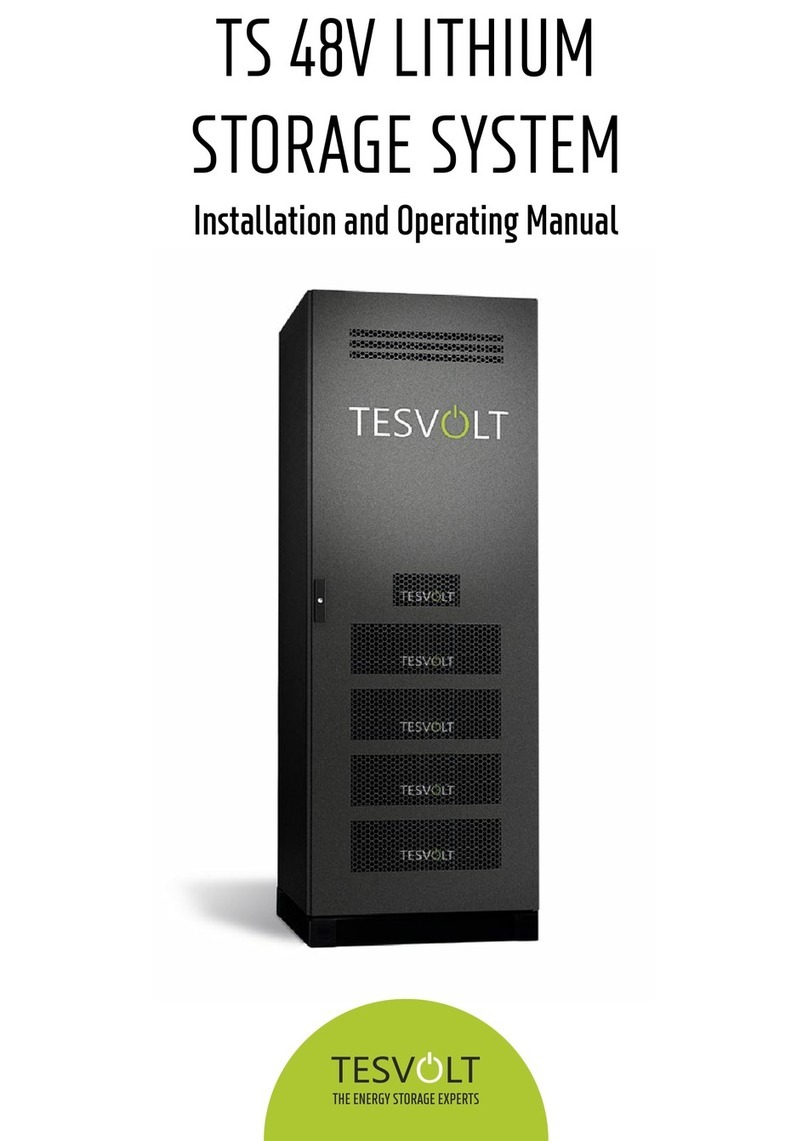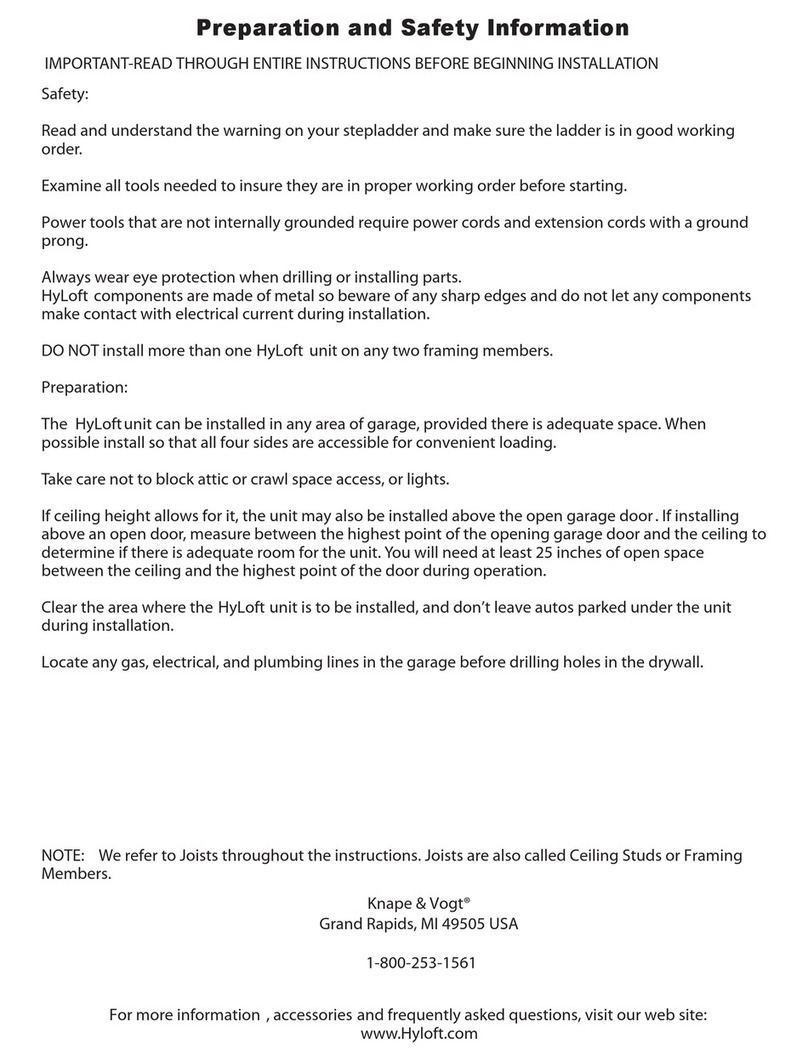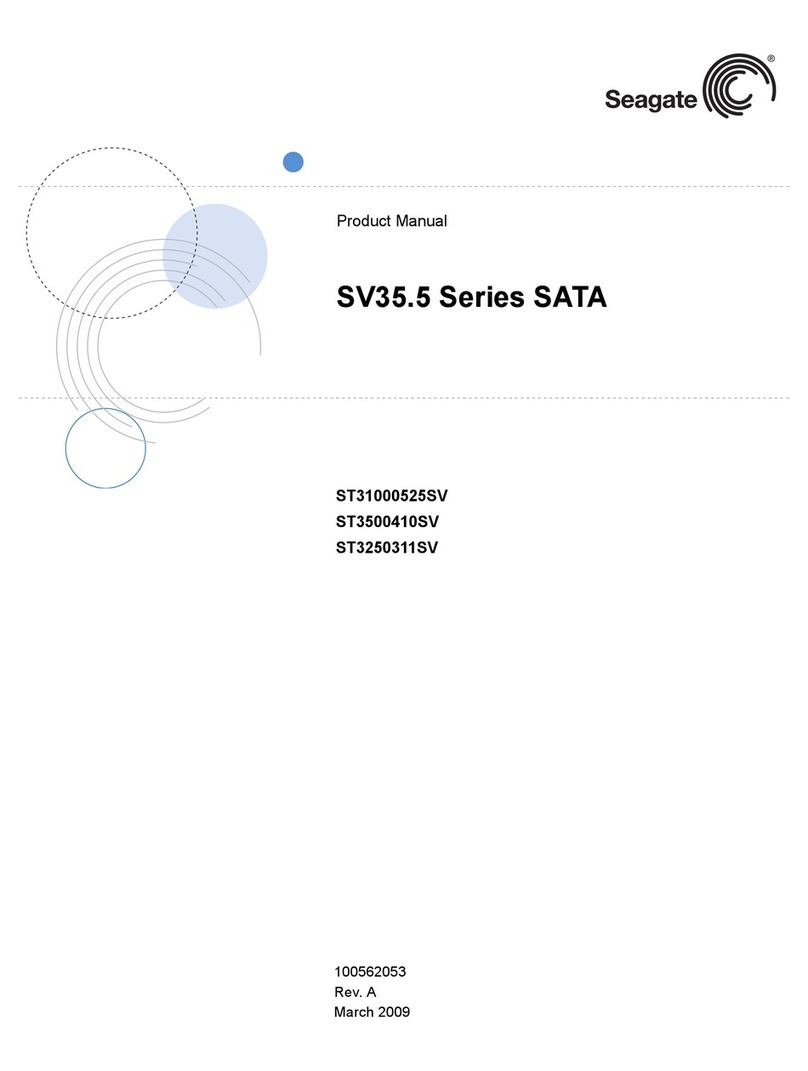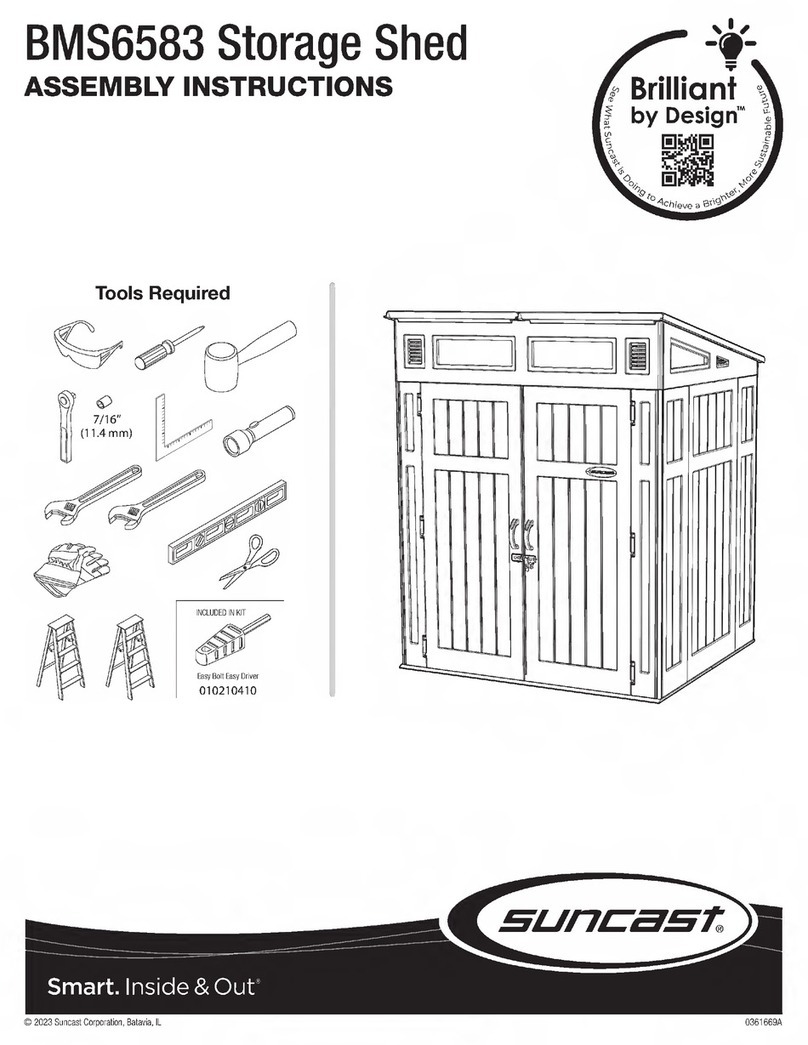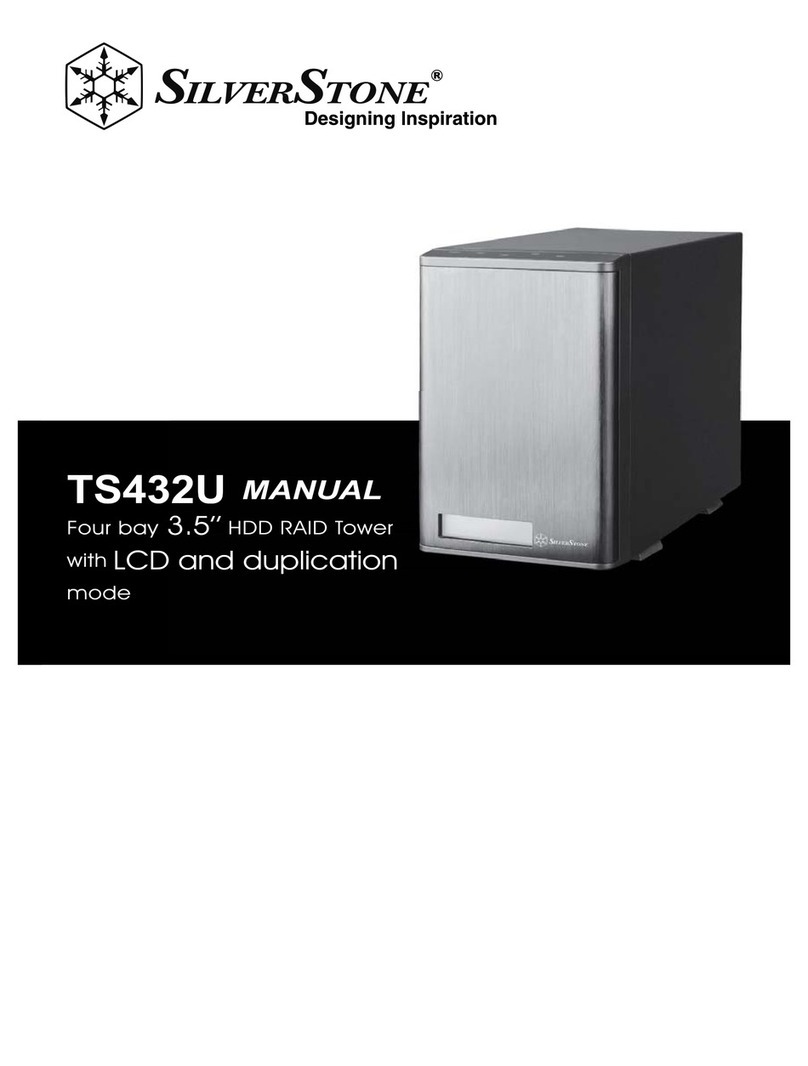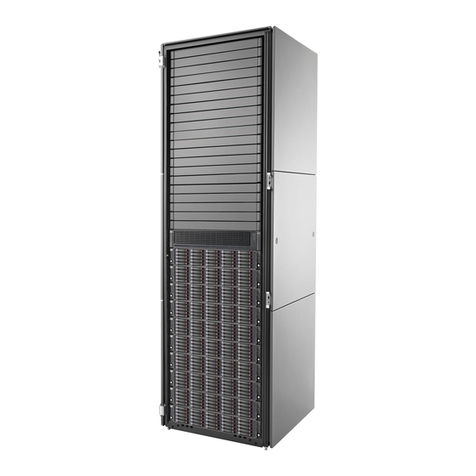TESVOLT TS HV 70 User manual

LITHIUM STORAGE SYSTEM
TS HV70
Installation and Operating Manual

2CONTENTS
© TESVOLT Subject to technical changes! RD.TI.002.E.ENG_Installation_Manual_TSHV70_v.C.01 Last revised 01/2021
CONTENTS
1 Important information about this manual ...........................................5
1.1 Scope ................................................................................5
1.2 Meaning of symbols ...................................................................5
1.3 General safety information .............................................................6
1.4 Disclaimer............................................................................7
1.5 Appropriate use .......................................................................7
1.6 Guarantee ............................................................................7
1.7 Requirements for installers.............................................................8
2 Safety ........................................................................8
3 Preparation ..................................................................10
3.1 Tools required .......................................................................10
3.2 Transport to the end customer .........................................................10
3.3 Transport at the end customer’s site....................................................11
3.4 Installation location...................................................................12
4 Technical data ................................................................13
4.1 SMA Sunny Tripower Storage 60 (SMA STPS 60) .........................................13
4.2 TESVOLT TS HV70 ....................................................................13
5 TS HV 70 battery storage system .................................................14
5.1 Cabinet structure and components .....................................................14
5.2 Scope of delivery of the TS HV 70 cabinet................................................15
5.3 Setup and components ...............................................................16
5.4 Scope of delivery of the TS HV 70.......................................................17
5.5 Connections and setup of the APU HV1000-S ............................................18
5.6 Connections and setup of the battery module ............................................18
5.7 Wiring the battery modules............................................................19
6 Installation ...................................................................21
6.1 Setting up the cabinet.................................................................21
6.2 Installing the components .............................................................24
6.3 E-stop contact .......................................................................30
6.4 External 24 V power supply for the APU HV1000-S .......................................31
7 Connection to the battery inverter ................................................32
7.1 System setup ........................................................................32
7.2 SMA STPS 60 connection diagram......................................................33
8 Commissioning ...............................................................34
8.1 Commission a single unit ..............................................................34
8.2 Commissioning TS HV 70 systems using the master/slave principle ........................35

CONTENTS 3
© TESVOLT Subject to technical changes! RD.TI.002.E.ENG_Installation_Manual_TSHV70_v.C.01 Last revised 01/2021
9 Decommissioning..............................................................38
10 Expanding the storage system ...................................................39
10.1 Expanding capacity using the TS HV expansion set .......................................39
10.2 Expanding capacity using additional TS HV 70 units.......................................41
10.3 Expanding the power using SMA STPS 60 ...............................................44
11 TESVOLT battery monitoring software – BatMon ....................................45
11.1 Views and functions ..................................................................45
11.2 Menu structure ......................................................................47
11.3 The most important cell parameters....................................................47
12 Firmware update ..............................................................48
13 Fault and warning messages on the TESVOLT TSHV70 ...............................50
14 Maintenance..................................................................54
15 Storage......................................................................55
16 Disposal .....................................................................55
17 Legal notice ..................................................................56

4
© TESVOLT Subject to technical changes! RD.TI.002.E.ENG_Installation_Manual_TSHV70_v.C.01 Last revised 01/2021

IMPORTANT INFORMATION ABOUT THIS MANUAL 5
© TESVOLT Subject to technical changes! RD.TI.002.E.ENG_Installation_Manual_TSHV70_v.C.01 Last revised 01/2021
1 IMPORTANT INFORMATION ABOUT THIS MANUAL
1.1 SCOPE
This document applies to the TESVOLT TSHV 70 high-voltage storage system in conjunction with the
SMA Sunny Tripower Storage 60 battery inverter (SMA STPS 60).
Read this manual thoroughly to ensure error-free installation, initial commissioning and maintenance
of the TESVOLT TS HV70. Installation, initial commissioning and maintenance must be carried out by
qualified and authorised specialists. The Installation and Operating Manual should be kept close to the
unit and must be accessible at all times to all individuals involved in installation or maintenance.
All information about the battery inverter SMA Sunny Tripower Storage 60 in this manual is non-bind-
ing. TESVOLT assumes no responsibility for the accuracy and currency of this information. Ensure that
you follow the relevant product documentation, such as installation or operating manuals from the
manufacturers, for the battery inverter and other, third-party products.
This Installation and Operating Manual applies to Germany only, without restriction. Ensure that you
adhere to the applicable local legal regulations and standards.
The standards and legal regulations in other countries may contradict the specifications in this manual.
In this case, please contact ser[email protected] or the TESVOLT Service Line +49 (0) 3491 8797 - 200.
1.2 MEANING OF SYMBOLS
Symbols in the manual
This manual contains the following types of warnings and information:
DANGER! This symbol indicates that electric shock may result if you fail to follow the instruction,
even when the unit is disconnected from the utility grid, as a voltage-free state only occurs after a time
delay.
DANGER! This symbol indicates that death or serious injury may result if you fail to follow the
instruction.
CAUTION! This symbol indicates that injury may result if you fail to follow the instruction.
WARNING! This symbol indicates information that property damage may result if you fail to follow
the instruction.
NOTE: This symbol indicates information relating to the use of the unit.
Symbols on the unit
The following types of warning, prohibition and mandatory symbols are also used on the unit:
CAUTION! RISK OF CHEMICAL BURNS
If the battery is damaged and a fault occurs, this may result in electrolyte escaping and the formation
of hydrofluoric acid in small concentrations and quantities, among other effects. Contact with these liq-
uids can lead to chemical burns.
•Do not subject the battery modules to violent impact.
•Do not open, disassemble or mechanically alter the battery modules.
STOP

6IMPORTANT INFORMATION ABOUT THIS MANUAL
© TESVOLT Subject to technical changes! RD.TI.002.E.ENG_Installation_Manual_TSHV70_v.C.01 Last revised 01/2021
•If there is contact with the electrolyte, rinse the affected area immediately with water and promptly
seek medical attention.
CAUTION! RISK OF EXPLOSION
Improper handling or fire can cause lithium battery cells to ignite or explode and cause serious inju-
ries.
•Do not install or operate the battery modules in potentially explosive areas or in areas with high
humidity.
•Store the battery modules in a dry area and within the temperature ranges specified in the data
sheet.
•Do not open, drill through or drop the battery cells or modules.
•Do not expose the battery cells or modules to high temperatures.
•Do not throw the battery cells or modules into a fire.
•In case of fire, use CO2fire extinguishers if the fire comes from the battery. In case of fire in the
vicinity of the battery, use an ABC fire extinguisher.
•Do not use defective or damaged battery modules.
CAUTION! HOT SURFACE
In the event of malfunction, components can become very hot and cause serious injury if touched.
•Switch the storage system off immediately if it is defective.
•Take particular care when handling the unit if malfunctions or defects become apparent.
NO NAKED FLAMES!
Handling naked flames and sources of ignition in the immediate vicinity of the storage system is pro-
hibited.
DO NOT INSERT OBJECTS INTO OPENINGS ON THE STORAGE SYSTEM’S CASING!
No objects, such as screwdrivers, may be inserted through openings in the casing of the storage system.
WEAR SAFETY GOGGLES!
Wear safety goggles when working on the unit.
FOLLOW THE MANUAL!
It is imperative that you follow the Installation and Operating Manual when working on and operating
the unit.
1.3 GENERAL SAFETY INFORMATION
DANGER! Failure to observe the safety information can result in death.
Improper use can lead to fatal injuries. Any person tasked with working on the system must have read
and understood this manual and, in particular, the section “2 Safety” on page 8 et seq. All the
safety instructions must be followed under all circumstances.
Everyone who works on the TESVOLT TS HV70 must follow the specifications in this manual.
This manual cannot describe every conceivable situation. For this reason, the applicable standards and
corresponding occupational health and safety regulations always take priority.
In addition, installation may also involve residual hazards under the following circumstances:
•Installation is not carried out properly.
•Installation is carried out by personnel who have not received the relevant training or instruction.
•The safety information provided in this manual is not followed.

IMPORTANT INFORMATION ABOUT THIS MANUAL 7
© TESVOLT Subject to technical changes! RD.TI.002.E.ENG_Installation_Manual_TSHV70_v.C.01 Last revised 01/2021
1.4 DISCLAIMER
TESVOLT GmbH assumes no liability for personal injury, damage to property, damage to the product
and follow-on damage attributable to the following causes:
•Non-compliance with this manual,
•Improper use of the product,
•Repairs, opening the cabinet and other actions performed on or with the product by unauthorised
and/or unqualified personnel,
•Use of non-approved spare parts.
Unauthorised modifications or technical changes to the product are forbidden.
1.5 APPROPRIATE USE
The TESVOLT TSHV70 is a modular battery storage system based on lithium-ion technology. The com-
ponents were built in accordance with the current state of the art in technology and product-specific
standards.
The TESVOLT TSHV70 has been designed for operation with the the SMA Sunny (SMA STPS 60) three-
phase battery inverter. Any other use must be agreed with the manufacturer and, if necessary, with
the local energy supply company.
It may only be operated in closed rooms. The TESVOLT TSHV 70 works in an ambient temperature
range of -10°C to 50°C and at a maximum humidity of 85%. The battery cabinet may not be exposed to
direct sunlight or placed directly beside sources of heat.
The battery cabinet may not be exposed to corrosive environments.
When installing the battery storage system, ensure that it is standing on a sufficiently dry, horizontal
and flat surface with sufficient load-bearing capacity.
The altitude of the installation location may not be higher than 2,000 m above sea level without
approval in writing from the manufacturer.
In regions subject to flooding, care must be taken to ensure that the battery cabinet is installed in a
suitably elevated location and is protected against contact with water.
According to IEC62619, the storage system must be installed in a fire-proof room. This room must be
free from fire loads and must be equipped with an independent fire alarm unit in accordance with the
locally applicable regulations and standards. The room must be separated by classT60 fire doors.
Comparable fire protection requirements also apply to other openings in the room (e.g. windows).
Adherence to the specifications in this manual also forms part of appropriate use.
The TESVOLT TSHV70 may not be used:
•for mobile use on land or in the air (it may only be used on water in agreement with, and with the
written consent of, the manufacturer),
•for use with medical equipment,
•as a UPS system.
1.6 GUARANTEE
The current guarantee conditions can be downloaded from the internet by visiting www.tesvolt.com.

8SAFETY
© TESVOLT Subject to technical changes! RD.TI.002.E.ENG_Installation_Manual_TSHV70_v.C.01 Last revised 01/2021
1.7 REQUIREMENTS FOR INSTALLERS
The locally applicable regulations and standards are to be adhered to for all work.
The installation of the battery storage system may only be carried out by qualified electricians who
have the following qualifications:
•Training in dealing with hazards and risks associated with installing and operating electrical equip-
ment, systems and batteries,
•Training in installing and commissioning electrical equipment,
•Knowledge of and compliance with the locally applicable technical connection requirements, stand-
ards, directives, regulations and laws,
•Knowledge of handling lithium-ion batteries (transport, storage, disposal, sources of danger),
•Knowledge of and compliance with this Installation and Operating Manual and other applicable docu-
ments,
•Successful participation in TESVOLT HV 70 certification training (information about the training
courses can be found at www.tesvolt.com. For further information, please send an email to
academy@tesvolt.com).
2 SAFETY
The TS HV 70 meets the requirements set out in IEC61508 parts1 to7 and complies with safety integ-
rity level (SIL)1.
DANGER! Life-threatening electric shock from damaged components or short circuit
Bridging the battery terminals causes a short circuit that results in a flow of electrical current. A short
circuit of this type should be avoided under all circumstances. For this reason, follow these instruc-
tions:
•Use insulated tools and insulated gloves.
•Do not place any tools or metal parts on the battery modules or the APU HV1000-S.
•Always remove watches, rings and other metal objects when working with the batteries.
•Do not install or operate the battery storage system in explosive areas or areas with high humidity.
•When working on the battery storage system, switch off all voltage supplies first to the charge con-
troller, then to the battery, and ensure that they cannot be switched on again.

SAFETY 9
© TESVOLT Subject to technical changes! RD.TI.002.E.ENG_Installation_Manual_TSHV70_v.C.01 Last revised 01/2021
DANGER! Chemical burns and poisoning due to electrolyte or poisonous gases
During normal operation, no electrolyte can escape from the battery and no poisonous gases can
form. Despite careful design, damage to the battery in the event of a fault can result in escaping elec-
trolyte or small concentrations and quantities of toxic gases, organic solvent gases and hydrofluoric
acid. For this reason, please follow these instructions:
•Do not subject the battery modules to violent impact.
•Do not open, disassemble or mechanically alter the battery modules.
If there is contact with the electrolyte, rinse the affected area immediately with water and promptly
seek medical attention.
DANGER! Improper handling can result in life-threatening burns
Lithium battery cells can ignite if handled incorrectly. For this reason, ensure that you adhere to the
following instructions for handling lithium battery cells:
•Do not install or operate the battery modules in potentially explosive areas or in areas with high
humidity.
•Store the battery modules in a dry area and within the temperature ranges specified in the data
sheet.
•Do not open, drill through or drop the battery cells or modules.
•Do not expose the battery cells or modules to high temperatures.
•Do not throw the battery cells or modules into a fire.
•In case of fire, use CO2fire extinguishers if the fire comes from the battery. In case of fire in the
vicinity of the battery, use an ABC fire extinguisher.
•Do not use defective or damaged battery modules.
DANGER! Danger of death due to misuse
Any use of the battery storage system beyond the intended use or any other type of use can result in
considerable hazards.
DANGER! Danger of death due to unqualified operators
Incorrect handling of the battery storage system can result in significant hazards for the operator. For
this reason, any action that requires the battery cabinet to be opened may only be carried out by quali-
fied specialists in accordance with the instructions in section “1.7 Requirements for installers” on page
8.
WARNING! Incorrect use can cause damage to the battery cells
•Do not expose battery cells or modules to rain and do not immerse them in liquids.
•Do not expose battery cells to corrosive environments (e.g. ammonia, salt).
•Do not use any other battery inverters apart from the SMA STPS 60.
•Commission the battery storage system within six months of delivery at the latest.
STOP

10 PREPARATION
© TESVOLT Subject to technical changes! RD.TI.002.E.ENG_Installation_Manual_TSHV70_v.C.01 Last revised 01/2021
3 PREPARATION
3.1 TOOLS REQUIRED
TOOL USE
5–30 Nm torque wrench with 10 and 13 mm sockets, long
8mm hexagon socket screwdriver (recommended minimum
length: 120 mm in total)
For tightening the grounding connections and the AC and DC
connecting cables to the SMA STPS 60, for example
TX 25/30 Torx screwdriver For fastening the baying connectors and removing the cover of
the DC connection, for example
PH 3 cross-head screwdriver Fastening the battery modules and APU HV1000-S in the
battery cabinet
35 mm² to 50 mm² crimping tool For crimping the wire-end ferrules for the DC connecting cable
Voltmeter (min. 1,000 VDC) Measuring the power supply and battery voltages (up to
1,000 V DC) and testing the battery modules’ state of charge
19 mm spanner Optional: lifting the cabinet cover, installing spacers
3.2 TRANSPORT TO THE END CUSTOMER
Transport regulations and safety information
All the requirements set out in the German Ordinance on the Transport of Dangerous Goods by Road,
Rail and Inland Waterways (GGVSEB) and the European Agreement Concerning the International Car-
riage of Dangerous Goods by Road (ADR) must be adhered to.
•The battery modules may only be transported by the manufacturer or by a haulier engaged by the
manufacturer. Should transport on public roads nevertheless be necessary, this may only be car-
ried out by personnel who have received appropriate training and instruction. This instruction is to
be documented and carried out periodically.
•Smoking is prohibited in the vehicle during the transport journey, and also in the immediate vicinity
during loading and unloading.
•Two tested fire class D metal fire extinguishers (minimum capacity: 2 kg) and equipment for dan-
gerous goods in accordance with the ADR are to be carried in the vehicle.
•The freight carrier is prohibited from opening the outer packaging of the battery module.
DANGER! Risk of injury due to improper transport in a vehicle
Improper transport and/or inadequate transport locks can cause the load to slide or topple over, lead-
ing to injuries. Position the cabinet vertically and in such a way that it cannot slide around in the vehi-
cle, and use securing straps to prevent it from toppling over and sliding.
CAUTION! Risk of injury due to tilting battery cabinet
The cabinet weighs approx. 120 kg and may topple over if tilted, causing injuries or becoming damaged
itself.
CAUTION! Risk of injury if safety shoes are not worn when the cabinet is being transported
Injuries such as crushing injuries can occur due to the components’ heavy dead weight when the cabi-
net or battery modules is/are being transported. For this reason, all individuals involved must wear
safety shoes with protective toe caps.
CAUTION!
Please also follow the safety information in section “3.3 Transport at the end customer’s site” on page
11 below, especially when loading and unloading.

PREPARATION 11
© TESVOLT Subject to technical changes! RD.TI.002.E.ENG_Installation_Manual_TSHV70_v.C.01 Last revised 01/2021
WARNING! Risk of damage to the unit during transport with installed battery modules
Transporting the cabinet with battery modules installed causes damage to the unit. The battery mod-
ules and cabinet must therefore always be transported separately from each other. Never move a cabi-
net once fitted with battery modules or, in particular, suspend it using a lifting device.
3.3 TRANSPORT AT THE END CUSTOMER’S SITE
CAUTION! Risk of injury due to improper transport of the battery modules
Battery modules are heavy (36 kg) and may cause injury if they topple over or slide around. Ensure
that transport is carried out safely and that only suitable means of transport are used.
CAUTION! Risk of injury due to tilting battery cabinet during transport
The cabinet weighs approx. 120 kg and may topple over if tilted, causing injuries or material damage.
CAUTION! Risk of injury if safety shoes are not worn when the cabinet is being transported
Injuries such as crushing injuries can occur due to the components’ heavy dead weight when the cabi-
net or battery modules are being transported. For this reason, all individuals involved must wear
safety shoes with protective toe caps.
CAUTION! Risk of injury from sharp edges and metal panels when transporting the cabinet
When the unpacked cabinet is being transported or installed, there is an increased risk of injury, par-
ticularly from sharp-edged metal panels. For this reason, all individuals involved must wear safety
gloves.
WARNING! Risk of damage to the unit during transport with installed battery modules
Transporting the cabinet with battery modules installed causes damage to the unit. The battery mod-
ules and cabinet must therefore always be transported separately from each other. Never move a cabi-
net once it is fitted with modules or, in particular, suspend it using a lifting device.
NOTE: Transport by at least two people.
We recommend using a hand truck. Caution: Do not damage the casing!
The individual components of the TS HV70 can weigh up to 120 kg, and are therefore unsuitable for
transport by one person. We recommend at least two people install the system. A dolly or hand truck
is helpful during the installation process. Take care not to damage the casing.
No more than five battery modules may be stored on top of each other.
Figure 3.1 Permissible and impermissible storage positions of a packaged battery module
STOP
STOP
STOP

12 PREPARATION
© TESVOLT Subject to technical changes! RD.TI.002.E.ENG_Installation_Manual_TSHV70_v.C.01 Last revised 01/2021
3.4 INSTALLATION LOCATION
Necessary prerequisites
Section “1.5 Appropriate use” on page 7 lists all the necessary prerequisites and conditions for
installing a TS HV 70.
When selecting the installation site, bear in mind transport routes and the necessary site clearance.
WARNING! Possible damage to the building due to static overload
When fully installed, the battery storage system weighs up to 823 kg. Ensure that the installation location
has sufficient load-bearing capacity. If in doubt, consult a structural engineer.
Dimensions
≥15
190
≥205
≥190
≥65
≥65 60
120
≥130
Space required (incl.
installation)
All dimensions in cm. Additional space required
for servicing, etc.
STOPSTOP

TECHNICAL DATA 13
© TESVOLT Subject to technical changes! RD.TI.002.E.ENG_Installation_Manual_TSHV70_v.C.01 Last revised 01/2021
4 TECHNICAL DATA
4.1 SMA SUNNY TRIPOWER STORAGE 60 (SMA STPS 60)
The TESVOLT TSHV70 has been optimised for use with the SMA STPS 60 three-phase battery inverter.
The overall system is perfectly coordinated to the needs of trade and industry. The system can be used
for an extremely wide range of applications thanks to the flexible energy management provided by the
SMA Inverter Manager and the high C-rate of the TS HV 70 storage system. Projects up to the mega-
watt range can be implemented with this unit.
TECHNICAL DATA SMA STPS
Nominal charging power (AC) 60 kVA
Nominal discharging power (AC) 75 kVA
DC voltage range 575 to 1,000 V DC
Dimensions (H x W x D) 740 x 570 x 306mm
Max. efficiency 98.8 %
Self-consumption < 3W
Operating temperature -25°C to 60°C
Weight 77 kg
Protection class IP65 | NEMA 3R
Communication Modbus TCP/IP
Topology Transformer-free
Figure 4.1 SMA Sunny Tripower Storage 60 with
SMA Inverter Manager
4.2 TESVOLT TS HV 70
TESVOLT TS HV TECHNICAL DATA
Energy (14 | 16 battery modules) 67 kWh | 76 kWh
C-rate 1C
Cell Lithium NMC prismatic (Samsung SDI)
Max. charging/discharging current 94 A
Cell balancing Active Battery Optimizer
Cycles expected at 100 % DoD | 70 % EoL | 23°C +/-5°C 1C/1C 6,000
Cycles expected at 100 % DoD | 70 % EoL | 23°C +/-5°C 0.5 C/0.5C 8,000
Efficiency (battery) Up to 98%
Self-consumption (standby) 5 W
Operating voltage 666 to 930 VDC
Operating temperature -10 to 50°C
Humidity 0 to 85% (non-condensing)
Max. altitude of the installation location 2,000 m above sea level
Total weight 14 | 16 battery modules 742 kg | 823 kg
Weight per battery module 36 kg
Weight per cabinet 120 kg
Dimensions (H x W x D) 1,900 x 1,200 x600 mm
Certificates/standards Cell IEC 62619, UL 1642, UN 38.3
Product CE,UN 38.3, IEC 62619, IEC 61000-6-1/2/3/4, German Battery Act 2006/66/EC
Guarantee 10-year performance guarantee, 5-year system guarantee
Recycling TESVOLT provides a free battery take-back scheme in Germany
Protection class IP20
Battery specification as per DIN EN 62620:2015 IMP47/175/127/[14S]E/-20+60/90

14 TS HV70 BATTERY STORAGE SYSTEM
© TESVOLT Subject to technical changes! RD.TI.002.E.ENG_Installation_Manual_TSHV70_v.C.01 Last revised 01/2021
5 TS HV 70 BATTERY STORAGE SYSTEM
5.1 CABINET STRUCTURE AND COMPONENTS
H
M
H.1
Baying connector with
screws for fastening
Cabinet grounding connec-
tion
GG.2
Cabinet halves
Base corner cover plate and
connector
A
Cage nut with installation aid
J.1
J
Pan head screw with plastic
washer
I
I.1
Optional: combination
bracket with fastening mate-
rials
Spacer with accessories for
lifting the roof
Cable support clip
Ring screw
KN
N.2
M.1
M.2
M.3
M.4
M.5 N.3
N.1
H.2
H
O.2
O.1O
A
DC
B
E
C.1
F
L
M.5
G.1
M.6
External switch
B

TS HV70 BATTERY STORAGE SYSTEM 15
© TESVOLT Subject to technical changes! RD.TI.002.E.ENG_Installation_Manual_TSHV70_v.C.01 Last revised 01/2021
5.2 SCOPE OF DELIVERY OF THE TS HV70 CABINET
ITEM NUMBER DESCRIPTION
A2Cabinet halves (left/right)
B1External switch (pre-installed)
C1Central grounding point (pre-installed)
C.1 1Grounding point (pre-installed)
D1C-rail (pre-installed)
E1Connection cable for external switch (pre-installed)
F2Cable retention rail (pre-installed, also referred to as “mounting rail”)
G4Base corner cover plates (right)
G.1 4L Base corner cover plates (left)
G.2 2L Connector for corner cover plates
H6Baying connector
H.1 12 L M6 x 35 setscrew
H.2 24 L 5.5 x 13 mm pan head screw (Torx TX25)
I100 M6 x 16 pan head screw (cross-head)
I.1 100 M6 plastic washer
J100 M6 cage nut
J.1 2L Auxiliary tool for cage nuts
K2Cable retention clip for C-rail (strain relief)
L8Ring screw
M1Cabinet grounding connection kit
M.1 2L M8 x 30 screw
M.2 2L M8 spring washer
M.3 2L M8 washer
M.4 2L M8 contact washer
M.5 2L M8 speed nut
M.6 1L Grounding cable
N820 mm spacer
N.1 8L M6 x 16 countersunk screw (Torx TX30)
N.2 8L Cover cap
N.3 8L Plastic washer
O2Combined bracket (optional – only for transporting the installed cabinet casing by crane, not including
battery modules)
O.1 4L M12 screw
O.2 4L M12 washer

16 TS HV70 BATTERY STORAGE SYSTEM
© TESVOLT Subject to technical changes! RD.TI.002.E.ENG_Installation_Manual_TSHV70_v.C.01 Last revised 01/2021
5.3 SETUP AND COMPONENTS
BATTERIERAUM
BATTERY ROOM
14
14.1
DC connector kit Bat-
Breaker/STPS
14
14.1
DC connector kit Bat-
Breaker/STPS
1
2
APU connector kit HV1000
3
3.1 3.2
3.3 3.4
BatBreaker DC connector kit
BatBreaker for the battery
inverter HV1000
7
7.1 7.2
7.3
7.4 7.5
Cabinet connector kit HV1000
5.2
5.3
Cabinet connector kit
HV1000
5.3
5
5.1
Rack balancing cable 0.75m
6
Module connector kit
HV1000
4.3
4.2
4
4.1
4.2
Switch
8
Type plate
9
TS HV 70 Fully installed
TS HV 70 Fully installed
7.23.2
12
6
4.1
4.3
4.2
5.1
5.2
5.3
3.1 7.1
3.3
12
Janitza power
measurement
SMA Inverter Manager with
power supply unit
SMA Inverter Manager with
10 11
1415 16
Installation
manual
TESVOLT
USB-Stick
1417
Battery room
sticker
SMA Data
Manager
M set
APU HV1000-S
Battery module incl. Active
Battery Optimizer (ABO)
18
BatBreaker
13
14.2

TS HV70 BATTERY STORAGE SYSTEM 17
© TESVOLT Subject to technical changes! RD.TI.002.E.ENG_Installation_Manual_TSHV70_v.C.01 Last revised 01/2021
5.4 SCOPE OF DELIVERY OF THE TS HV 70
ITEM NUMBER DESCRIPTION
11APU HV1000-S
214 or 16 Battery module 4.8-1C-HV1000 incl. Active Battery Optimizer (ABO)
31APU connector kit HV1000 from the APU to the first and 14th/16th battery module
3.1 1L DC connecting cable, 0.95 m – 35 mm² (RD to RD)
3.2 1L DC connecting cable, 1.15 m – 35 mm² (BK to BK)
3.3 1L Patch cable CAT 6, 0.30 m
3.4 1L APU grounding cable, 0.70 m – 16 mm² (GN-YW) M6 – M8
41Module connector kit HV1000 (extra pack with two extra cables each for 16 battery modules)
4.1 12 L DC connecting cable, 0.55 m – 35 mm2(RD to BK)
4.2 12 L Patch cable CAT6, 0.30 m
4.3 12 L Rack balancing cable, 0.24 m
51Cabinet connector kit HV1000
5.1 1L DC connecting cable, 1.20 m – 35 mm2(RD to BK)
5.2 1L Patch cable CAT 6 > CAT 6 patch cable, 1.00 m
5.3 1L Rack balancing cable, 1.10 m
61Rack balancing cable, 0.75 m
71DC connector kit for APU to Bat INV/BatBreaker – HV1000
7.1 1L DC connecting cable, 5.00 m – 35 mm2(red plug on one end)
7.2 1L DC connecting cable, 5.00 m – 35 mm2(plug black on one side)
7.3 2L Insulated wire-end ferrule, 35 mm²
7.4 1L Patch cable CAT 6, 5.00 m
7.5 1L Grounding cable, 5.00 m – 16 mm2(GN YW)
82Switch
92Type plate TS HV70
10 1SMA Inverter Manager
11 124 V power supply
12 1Janitza power measurement UMG 604E-Pro
13 Optional BatBreaker 160-4X-HV1000 (optional, part of the scope of delivery for master/slave systems)
14 Optional BatBreaker DC connector kit BatBreaker for the battery inverter HV1000
14.1 1L DC connecting cable, 1.00 m – 35 mm2(+ cable, red marking)
14.2 1L DC connecting cable, 1.00 m – 35 mm2(- cable, blue marking)
15 1TESVOLT TS HV 70 Installation and Operating Manual
16 1TESVOLT USB-Stick
17 1Battery room sticker
18 Optional SMA Data Manager M set incl. external 24V power supply

18 TS HV70 BATTERY STORAGE SYSTEM
© TESVOLT Subject to technical changes! RD.TI.002.E.ENG_Installation_Manual_TSHV70_v.C.01 Last revised 01/2021
5.5 CONNECTIONS AND SETUP OF THE APU HV1000-S
NO. DESIGNATION DESCRIPTION
1BATTERY − The battery’s DC connection for the negative pole (black)
2BATTERY + The battery’s DC connection for the positive pole (red)
3EXT SWITCH Connection of the external switch B
4E-STOP Four-pin plug for the optional connection of an emergency stop switch for quick shutdown (pre-in-
stalled with bridge on delivery)
5TERM CAN bus termination
TERM must be activated (ON) for the first and last CAN bus subscribers.
6CAN IN APU HV1000-S master/slave communication (input)
7CAN OUT APU HV1000-S master/slave communication (output)
8CAN SMA Connection not used on the TS HV70.
9LAN Modbus TCP/IP transmission for communication between battery and SMA Inverter Manager
10 ADDRESS Further information can be found in the section “Overview of all addressing options” on page 44.
11 BAT-COM Communication connection to the first battery module
12 CHARGER + DC connection for the SMA STPS 60 or BatBreaker for the positive pole (red)
13 CHARGER − DC connection for the SMA STPS 60 or BatBreaker for the negative pole (black)
14 GROUND Grounding connection (M6 thread bolt on the rear of the unit)
15 DISPLAY Display for information, warnings and errors
16 MARKING Marking for activating and changing the display by tapping
17 SWITCH On/off switch for the battery
18 APU fuse (F1) Fuse to protect the APU HV1000-S
(2A miniature fuse, 5 x20 mm, time lag (T) according to DIN41571-2, type: ESKA 521.020, 250 V AC)
Operation is not possible with a defective fuse.
5.6 CONNECTIONS AND SETUP OF THE BATTERY MODULE
NO. DESIGNATION DESCRIPTION
19 − POLE Battery negative pole (black)
20 + POLE Battery positive pole (red)
21 RACK BALANCING IN Rack balancing (input)
22 RACK BALANCING OUT Rack balancing (output)
23 BAT-COM OUT Communication connection
for battery module (output)
24 BAT-COM IN Communication connection
for battery module (input)
BATTERY CHARGER
18 17
15
16
1 2 10 11 12 13
14
6 853
7 9
4
19
21
22
2423
20

TS HV70 BATTERY STORAGE SYSTEM 19
© TESVOLT Subject to technical changes! RD.TI.002.E.ENG_Installation_Manual_TSHV70_v.C.01 Last revised 01/2021
5.7 WIRING THE BATTERY MODULES
Wiring 14 battery modules
1
2
3
4
5
6
7
14
13
12
11
10
9
8
1
DC module connector Rack balancing BAT- COM Order in the battery string

20 TS HV70 BATTERY STORAGE SYSTEM
© TESVOLT Subject to technical changes! RD.TI.002.E.ENG_Installation_Manual_TSHV70_v.C.01 Last revised 01/2021
Wiring 16 battery modules
1
1
2
16
15
3
4
5
6
7
14
13
12
11
10
98
DC module connector Rack balancing BAT- COM Order in the battery string
Other manuals for TS HV 70
1
Table of contents
Other TESVOLT Storage manuals
Popular Storage manuals by other brands
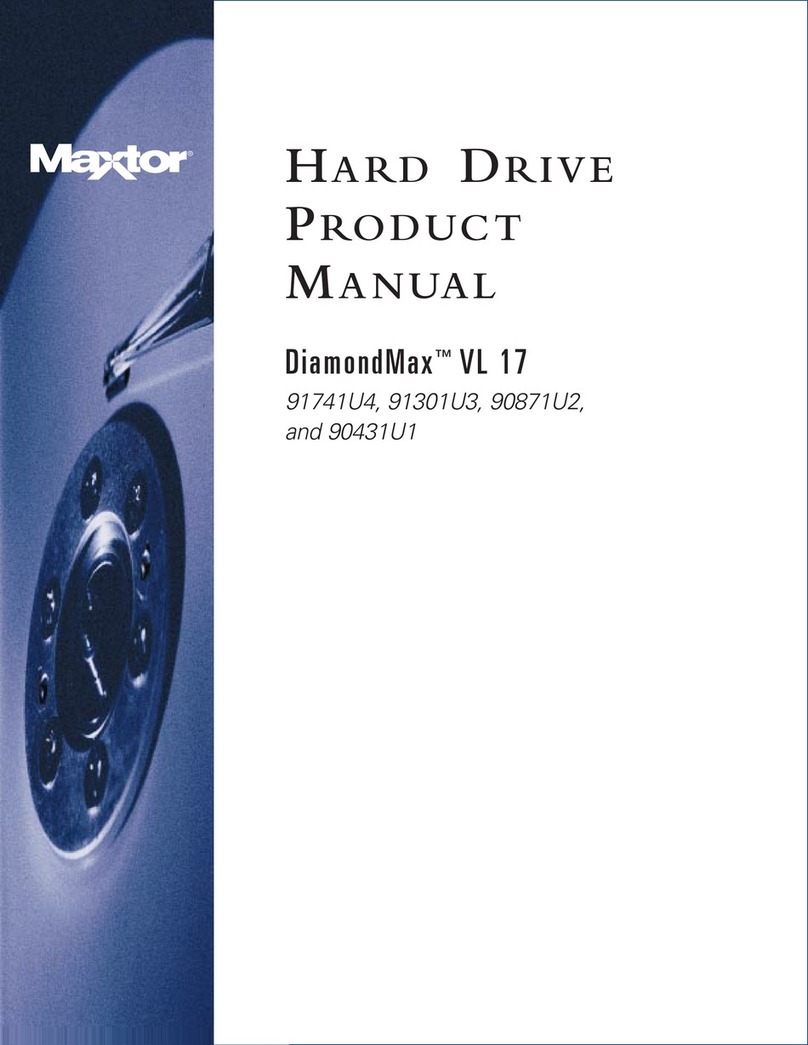
Maxtor
Maxtor DiamondMax VL 17 product manual
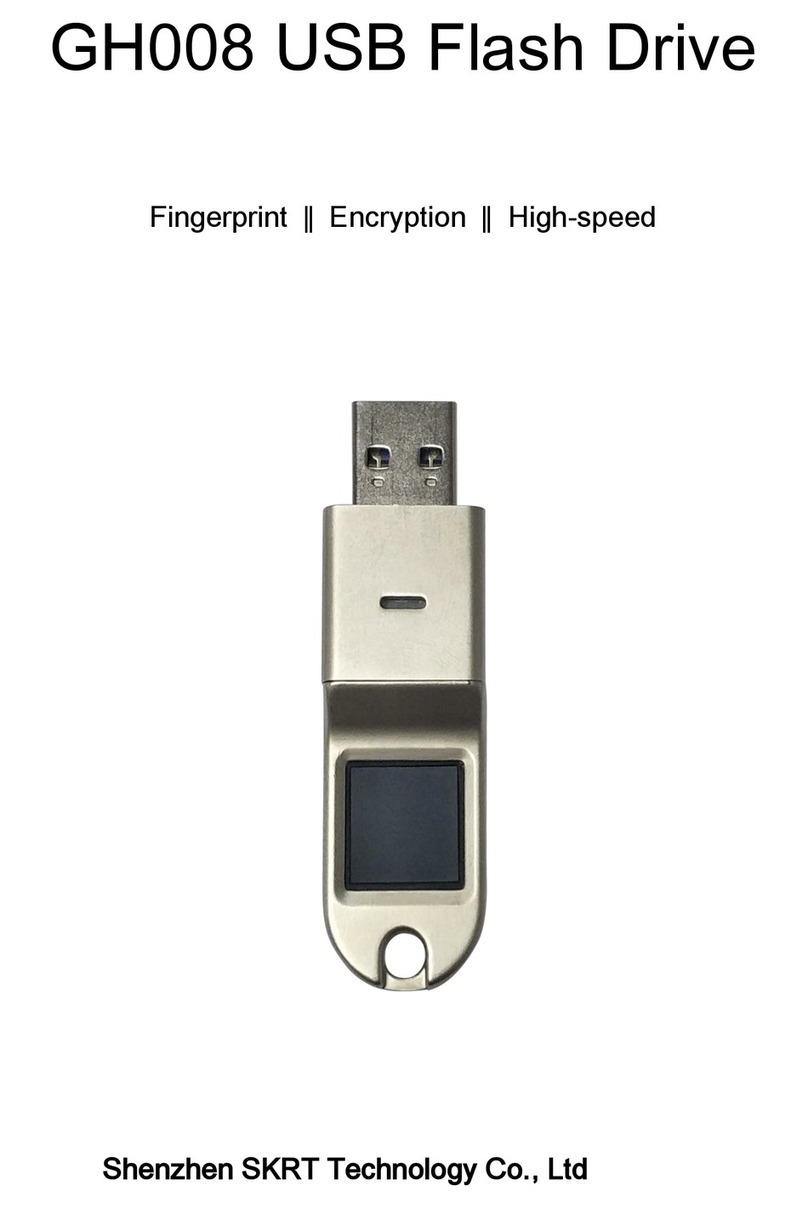
Shenzhen SKRT Technology
Shenzhen SKRT Technology GH008 quick start guide

XtendLan
XtendLan XL-NAS-500SA Installation and configuration guide
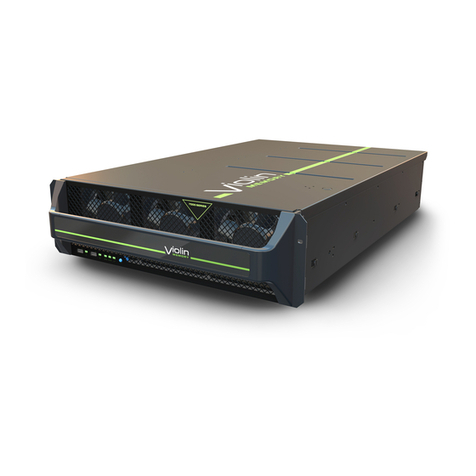
VIOLIN SYSTEMS
VIOLIN SYSTEMS 7000 Series Service guide
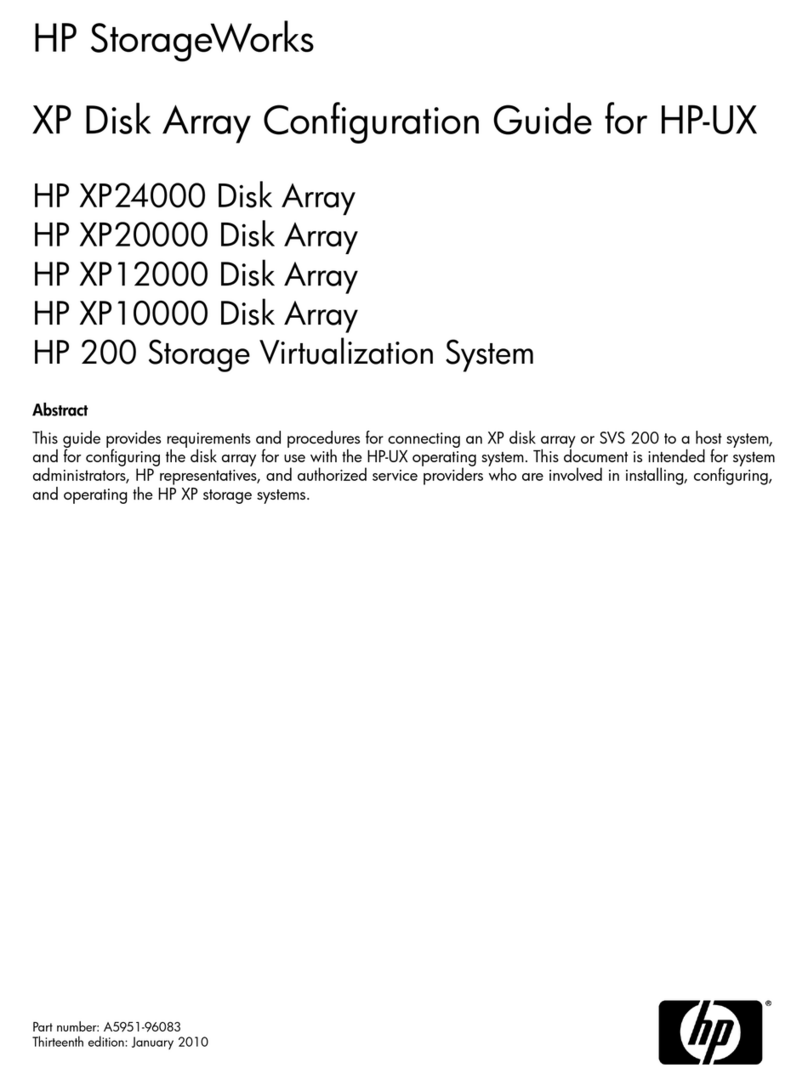
HP
HP StorageWorks XP10000 - Disk Array Configuration guide
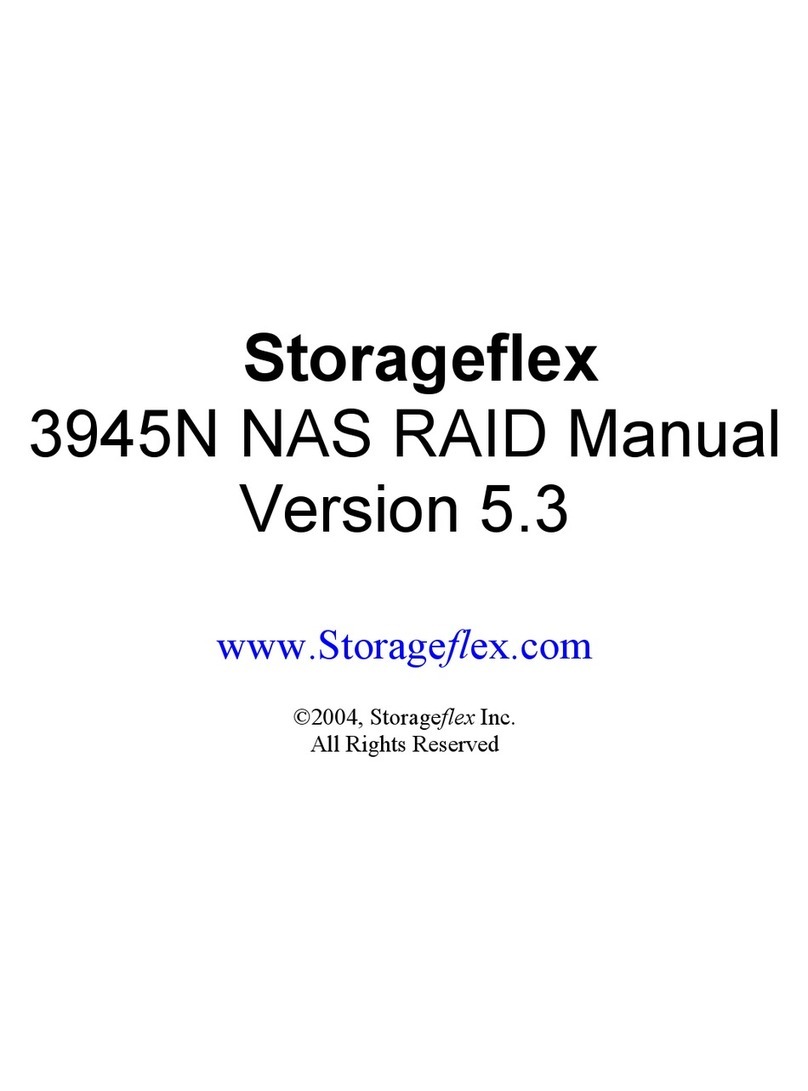
Storageflex
Storageflex NAS RAID 3945N manual
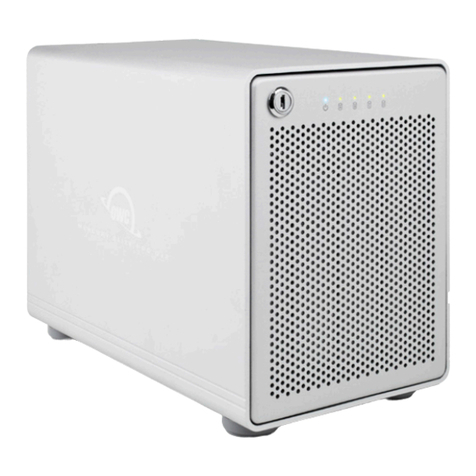
OWC
OWC Mercury Elite Pro Qx2 Assembly manual & user guide

Seagate
Seagate MOMENTUS ST9500325AS product manual
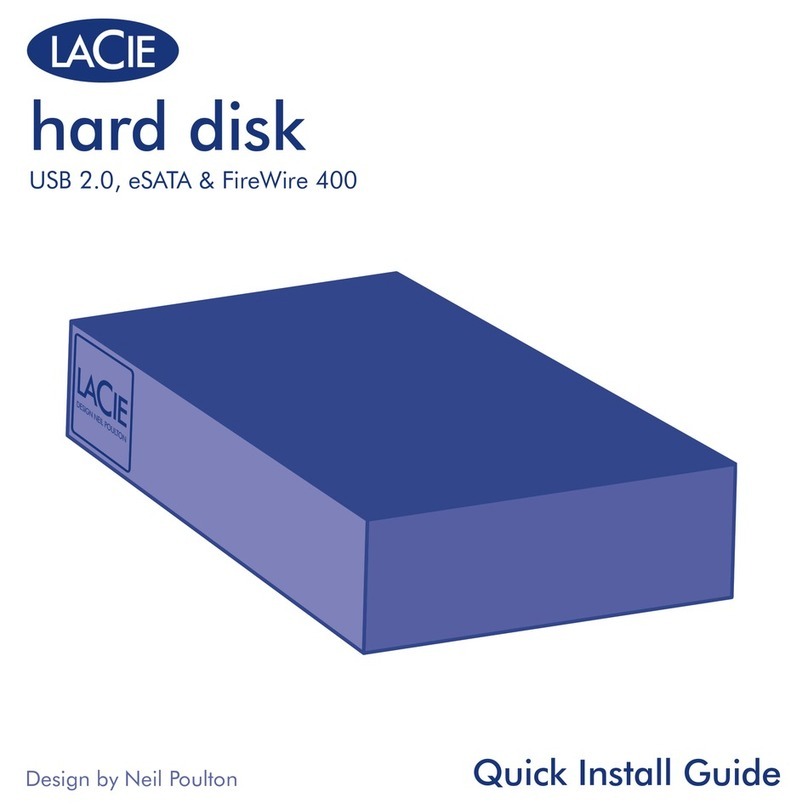
LaCie
LaCie Hard Disk Quick install guide
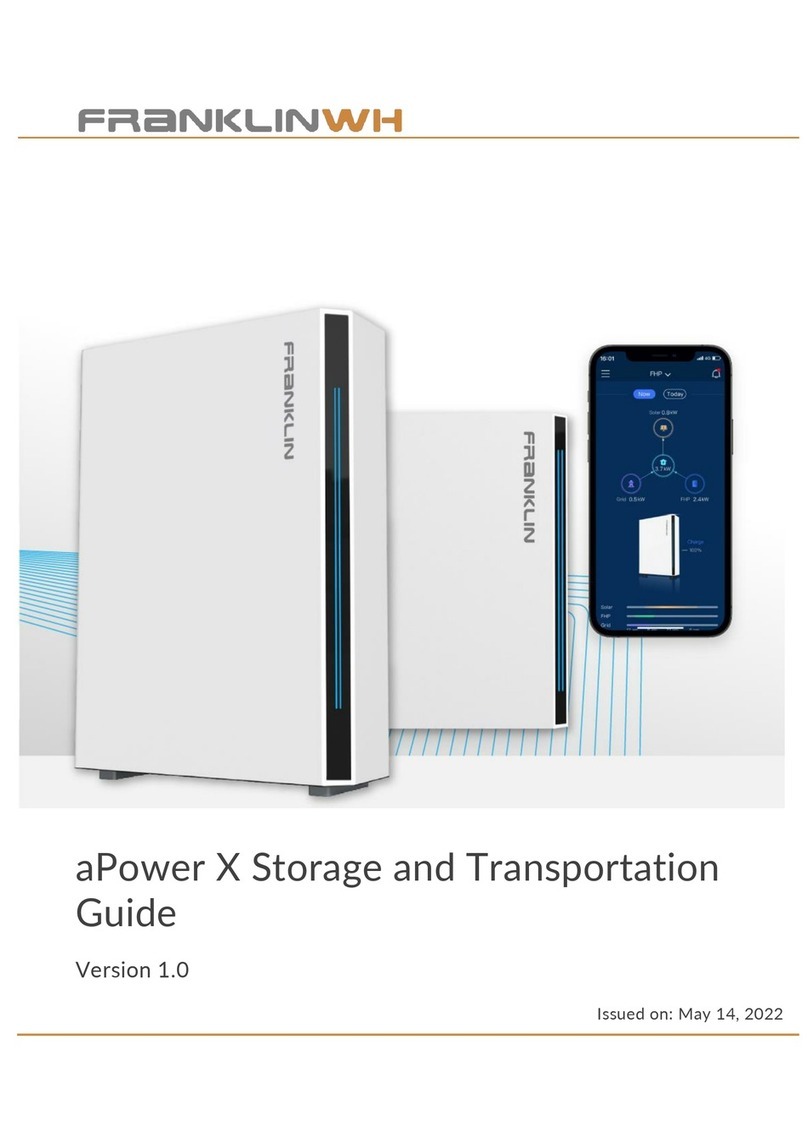
FRANKLINWH
FRANKLINWH aPower X Guide
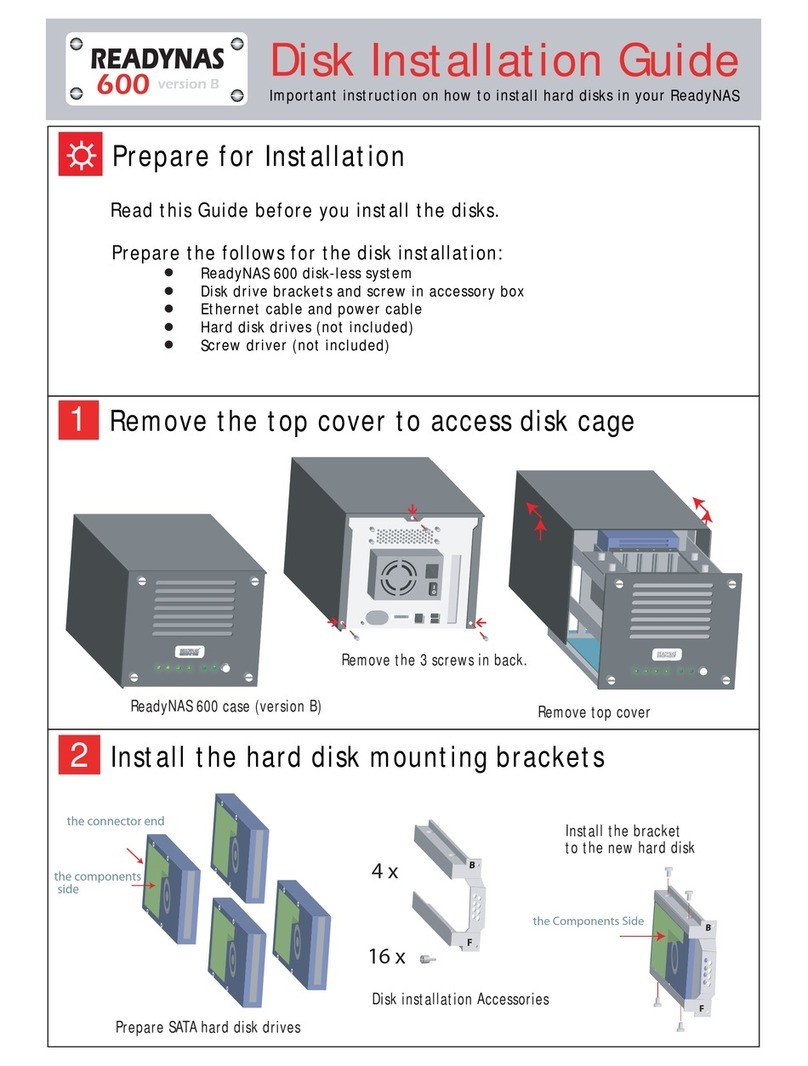
Infrant Technologies
Infrant Technologies ReadyNAS 600B installation guide

Buffalo
Buffalo MiniStation SSD-PUT user manual

